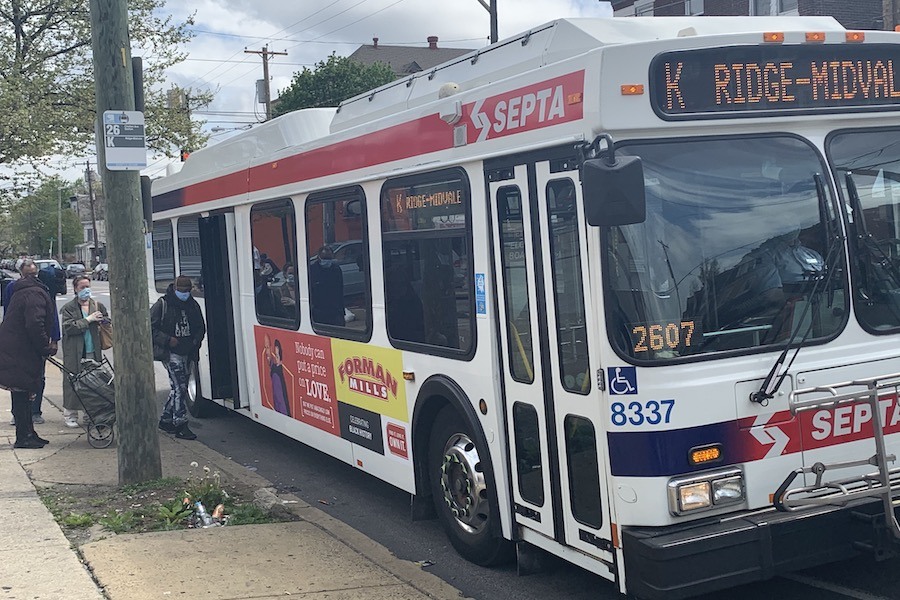Here’s What SEPTA’s Next GM Must Do to Avoid Doomsday
These five priorities can be put into three buckets: Secure steady funding. Improve safety and security. And continue the transformations started under Leslie Richards.

With the announcement of a nearly 3o percent fare hike this morning, SEPTA climbed into what it calls a “doomsday spiral.” The first thing SEPTA’s next general manager needs to do is get the agency out of the spiral. / Photograph by Sandy Smith
Now that SEPTA General Manager Leslie Richards has announced her departure at the end of this month, our attention must turn to her successor.
That person, whoever they are, will inherit an agency on the brink. SEPTA has spent the better part of four years working on a total revamp of the way it runs the buses and trains that knit this region together. And now, a sharp cut in its funding has put those plans on the shelf.
Fortunately for those of us who, like me, depend on SEPTA to get around the region, SEPTA management continues to negotiate new contracts with two of its unions, and neither union has walked off the job yet. I hope that the new contracts treat those who make the system work with the respect and safe working environment they deserve. SEPTA spokespeople said the same thing at this morning’s news conference announcing steep fare hikes.
But these things will cost money. And how will SEPTA take care of them with a huge hole in its budget? The failure of the Governor and the General Assembly to pass a supplementary budget bill that included stable funding for mass transit statewide has led SEPTA to take the first step down the path towards Doomsday by raising fares nearly 30 percent effective January 1st. And the agency plans to announce 20 percent cuts in service after the New Year if nothing is done.
This means that SEPTA’s next general manager will walk into a house on fire when they enter 1234 Market Street for the first time. Here are the things they must do to put out the fire.

SEPTA’s capital budget is in okay shape, so the agency can catch up with some of its maintenance backlog and has funds to buy new rail vehicles like these trolleys. But it also needs money to run them. Getting that money is the first item on the list. / Rendering courtesy of Alstom
1. Plug the funding hole fast.
This may be a tall order at best and impossible at worst. Governor Shapiro can apply a band-aid to the wounded SEPTA budget and buy time for the new GM and area legislators to find a source of steady transit funding by reallocating federal highway funds to public transportation. With any luck, that will have been done by the time the new GM takes charge; but right now, luck is in short supply both here and in Harrisburg. Otherwise, the new GM will need to lean on the governor.
2. Think creatively about new ways to fund the agency.
The answer is for the Philadelphia region to rely on its own resources for the funding. One of the proposed solutions for filling the hole for SEPTA and the 58 other mass transit agencies statewide was to dedicate a larger share of state sales tax revenue to public transportation. But a better solution — a bill that would have allowed Southeastern Pennsylvania and Allegheny County to levy dedicated taxes for transit — passed the House but died in the Senate this session. SEPTA’s next GM should lead the charge for making this bill law — and that will mean getting Southeastern Pennsylvania Republicans in the General Assembly to persuade their outstate colleagues that funding SEPTA is not a form of welfare but rather a way to keep people off of it. Another option would be collecting tolls on the freeways leading into the city. (Motorists passing through would have their tolls rebated as they pass under the gantries at the other city limit.)
3. Continue the personnel reforms Richards started.
Leslie Richards instituted programs to both diversify SEPTA’s management ranks and prepare the agency for an era where getting people to work in the morning and home in the evening would not be its bread and butter. This also included encouraging the development of its frontline workers. All of these initiatives, for which some SEPTA insiders have given Richards mixed marks, need to continue.
4. Focus on safety and civility on the trains and buses.
Riders now shun the Broad Street and Market-Frankford lines because of the spike in antisocial behavior that came in the wake of the COVID pandemic. Passengers now routinely light up in trains, avoid paying fares, and even pass out from drug use. SEPTA has a mechanical solution to one of these problems: New fare gates at 69th Street Transportation Center (video above) have all but eliminated fare-beating there. The agency needs to fast-track their installation systemwide. As for the others, SEPTA should take a page from the Center City District playbook and consider adding a “safety ambassador” force to bolster its police department.
5. Make Regional Rail an integral part of the transit system.
One of the things I have heard some within the agency lament is an attitude on the part of some in upper management that Regional Rail is merely a commuter service — a notion tinged with some racial animus, by the way. This attitude makes Regional Rail an appendage rather than the core service it should be. The ”Reimagining Regional Rail” portion of SEPTA’s reinvention program should be pursued as diligently as the “Bus Revolution” has been, and the funding shortfall threatens to derail both elements. (Which brings us back to items 1 and 2 on this list.)
There will be other items on the new GM’s to-do list, to be sure. But these five should be their top priority.


